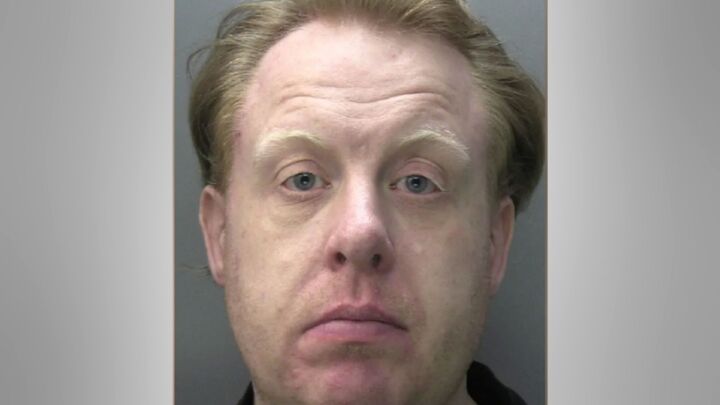The General Election that nobody won
Let Rob Lyons take you on a guided tour of the election results and what they reveal about modern Britain.

Want to read spiked ad-free? Become a spiked supporter.
As the private negotiations over a coalition government between the Conservatives and the Lib Dems rumble on, it is worth pausing for a moment to take a cool, clear look at the election results and what they say about the state of politics in the UK.
Conservatives
The Tories are the closest thing to winners in this election. But given that for the past two years it was widely assumed that they would now be in power, with a comfortable parliamentary majority, the election has proven to be a major disappointment for them. Of the 649 seats contested (voting in the safe Conservative seat of Thirsk & Malton had to be postponed due to the death of the UK Independence Party candidate), the Conservatives won 306 seats. This represents a gain of 97 seats compared with their tally in 2005, and it represents 36.1 per cent of the national vote.
Although the Tories made something of a breakthrough in Wales (going from three seats to eight), the party’s strength lies almost entirely in England. Despite having the most seats in the UK as a whole, the Tories have only one seat in Scotland (in the predominantly rural, borders constituency of Dumfriesshire, Clydesdale and Tweeddale). The electoral map of England, on the other hand, is a sea of blue. In the large but relatively sparsely populated rural seats, the Conservatives are completely dominant, apart from the south-west of England where the Lib Dems held on to many of their seats. The Conservatives also now have a stranglehold over the south-east of England outside of London (75 out of 84 seats) and over eastern England, too (52 out of 58 seats).
In the densely populated cities, on the other hand, the Conservatives were far less successful. Even in London, with its many well-to-do suburbs, the Conservatives won 28 seats to Labour’s 38 (the Lib Dems got the other seven).
Labour
This was Labour’s worst election result since the car crash of 1983, when, standing on a manifesto described as ‘the longest suicide note in history’, they won a mere 209 seats with 27.6 per cent of the vote. Last Thursday was almost as bad. Gordon Brown’s party won 258 seats based on 29 per cent of the vote. In all, Labour lost 91 seats compared with its 2005 results. A number of high-profile former ministers, including former home secretaries Charles Clarke and Jacqui Smith, lost their seats; Ed Balls, widely regarded as Brown’s trusted lieutenant, sneaked back into parliament by the skin of his teeth.
A mirror image of the Conservative vote, Labour was most successful in the big cities and in Scotland. North of the border, Labour holds 41 of the 59 seats. (One quirk of election night was that every single seat in Scotland is still controlled by the party that won it in 2005.) On the other hand, Labour was wiped out in the south-east and the east of England, losing 24 seats in those two regions.
Just to show how confused the political situation is today, Labour did much better in the council elections in England, which were also held last Thursday alongside the General Election. It gained control of 15 councils and returned an extra 420 councillors.
Liberal Democrats
If any party can compete with the Conservatives in terms of failing to live up to expectations, it is the Lib Dems. On the eve of the election, all the chatter was about a major surge in support for Nick Clegg’s party. But while the Lib Dems do now hold the balance of power in the new parliament, they actually have five fewer seats than they won in 2005 (down to 57) with only a slight increase in their vote (up one percentage point to 23 per cent).
Over half of the Lib Dems’ parliamentary representation comes from three areas: the south-west of England (15 seats out of 55), Scotland (11 seats out of 59), and London (seven seats out of 73).
The nationalists
There was simply no sign of any great rise in popularity for either the Scottish National Party (SNP) or the Welsh nationalist party, Plaid Cymru. The experience of SNP government in the devolved parliament in Edinburgh clearly hasn’t wowed the electorate – the party remained stuck on six seats, on a slightly increased share of the vote (19.9 per cent). Plaid Cymru won three seats, one more than in 2005, but its share of the vote actually fell one percentage point to 11 per cent.
Other minor parties
After the three big parties, the next biggest in terms of share of the vote, UK-wide, was the UK Independence Party (UKIP), which won 3.1 per cent of the votes. But it won no seats in parliament. The British National Party (BNP) stood in more constituencies than it did in 2005, so its share of the national vote increased (to 1.9 per cent). But its leader Nick Griffin didn’t only fail to win the main target seat of Barking and Dagenham – he ended up coming third there. Meanwhile, the party was wiped out from the Barking and Dagenham council, losing all 12 councillors – hardly the mortal threat to British society it has been portrayed as by its critics.
The small party that had the most high-profile result was the Green Party. Its leader, Caroline Lucas, won the seat of Brighton Pavilion with a majority of just over a thousand. However, there was little appetite for the Greens’ message more broadly: the party’s share of the national vote actually fell, to little more than one per cent.
Northern Ireland
Democratic Unionist Party (DUP) leader Peter Robinson lost his seat in East Belfast to the Alliance Party, but almost certainly as a backlash against personal scandals (mostly involving Mrs Robinson). The Ulster Unionist / Conservative Party joint venture proved a disaster: the only Ulster Unionist to win was Lady Sylvia Hermon; actually she is better described as a former Ulster Unionist, since she retained her North Down seat as an independent after she refused to join up with the Conservatives. The DUP and Sinn Fein remain the largest parties.
The Abstention Party
The story of the night, but perhaps the least commented on, was the fact that very few people actually voted. Despite the reports of people in some constituencies being turned away from the polling stations, this was clearly a matter of organisational incompetence and poor planning rather than the result of a record turnout. From 1929 (the first election with universal suffrage) until 1997, the average turnout was 76 per cent. In the past three elections, the average has been just 62 per cent. Last Thursday’s poll may look relatively good (65.1 per cent) compared to 2001 (59.4 per cent) and 2005 (61.4 per cent), but the fact is that the past three elections have seen by far the lowest turnouts in modern electoral history.
What that means is that the individual political parties each only have the support of a small share of the electorate:
| party | share of votes cast | share of total electorate |
| Conservatives | 36.1% | 23.5% |
| Labour | 29.0% | 18.9% |
| Liberal Democrats | 23.0% | 15.0% |
| Major parties | 88.1% | 57.4% |
The three major parties together only managed to persuade about 57 per cent of the electorate to vote for them – far from a ringing endorsement of the political options open to us. But this is not a problem of ‘apathy’, nor can it be solved by making voting easier. Many more people than actually voted engaged with the political debate around the election (such as it was). But millions of people could not even bring themselves to vote for the ‘least worst’ candidate.
For all the talk in the post-election carve-up about who has a mandate and who does not, the conclusion that commentators seem to be avoiding is that no party has managed to inspire or win the support of even a sizeable minority of the electorate.
Rob Lyons is deputy editor of spiked.
Who funds spiked? You do
We are funded by you. And in this era of cancel culture and advertiser boycotts, we rely on your donations more than ever. Seventy per cent of our revenue comes from our readers’ donations – the vast majority giving just £5 per month. If you make a regular donation – of £5 a month or £50 a year – you can become a and enjoy:
–Ad-free reading
–Exclusive events
–Access to our comments section
It’s the best way to keep spiked going – and growing. Thank you!









Comments
Want to join the conversation?
Only spiked supporters and patrons, who donate regularly to us, can comment on our articles.